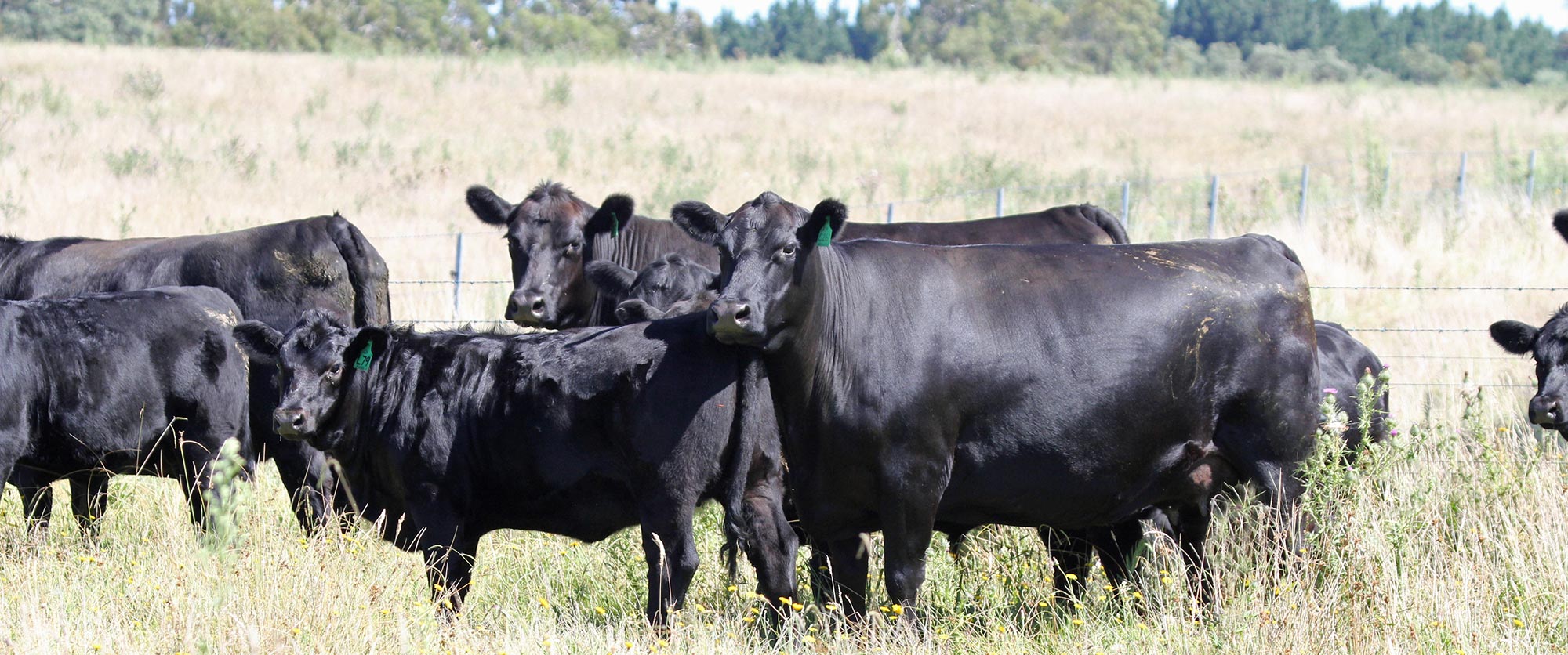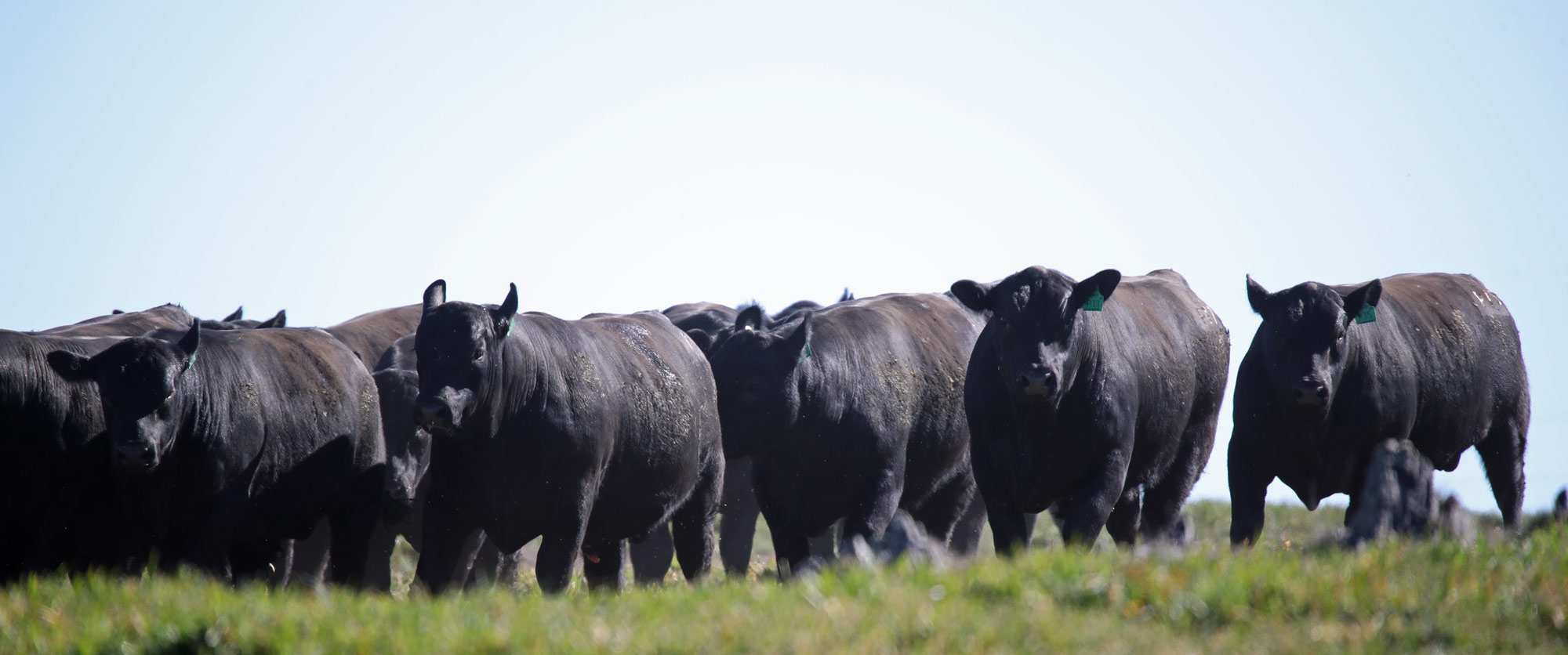Techniques for Maximising Progeny
Growth and Survival, Fertility and Lifetime
Productivity in Breeders
 The Animal
The Animal
The efficiency of both energy and calcium metabolism in the dam at parturition is critical to the survival, health and growth rate of newborn progeny. It also fundamentally determines the reproductive efficiency, productive life and stocking rate potential of breeding units in most enterprises.
Cows & heifers at the point of calving are at a significant risk of both clinical and subclinical deficiencies in a range of critical nutrients because of the rapid increase in nutrient demand precipitated by the onset of milk production. Not least of these is, of course, energy.
Importantly, increased partitioning of energy for milk production also means an increased demand for the other essential nutrients required to make it. Calcium is amongst the most critical of these and it is common for most cows & heifers at or around the point of calving to experience some degree of calcium deficiency or Hypocalcaemia.
In practice however, only a small percentage of affected animals ever exhibit the obvious or “clinical” symptoms of the problem, including loss of overall muscle tone, spasms or “twisting” of the head and neck in cattle. Many producers will recognise these as classic signs of “Milk Fever” which is the term commonly used to describe clinical hypocalcaemia.
Regardless of the small number of cases of clinical milk fever you may (or may not see) a large number of Dams in your herd are affected to some degree by calcium deficiency every year. And, although less acute, the effects of sub-clinical hypocalcaemia continues to have a profound impact on the productive potential of both dams & their progeny. This is because it has the potential to both limit milk production and, profoundly reduce the functional efficiency of critical components of the animals Neuro-muscular system.
Both clinical and subclinical hypocalcaemia result from a decline in the total pool of available calcium in the bloodstream. This decline is also generally reflected in reduced Calcium concentrations within the nervous system resulting in a reduction in the efficiency with which signals are transmitted to smooth muscle groups.
Because of this, animals affected by sub clinical hypocalcaemia also experience a substantial loss of control over the frequency and strength with which the key smooth muscle groups of both the Rumen and Uterus contract.
The frequency and strength of rumen contractions critically determines feed conversion efficiency and therefore energy (and other nutrient) availability to the animal. Cows & heifers with reduced rumen function resulting from subclinical hypocalcaemia are therefore at a higher risk of ketosis (Pregnancy Toxaemia). They also tend to suffer a loss of appetite.
Remember, reduced feed conversion efficiency directly impacts on your potential stocking rate. So too does poor uterine muscle function.
Weakened uterine contraction rates increase the time taken to give birth and the number of births requiring assistance and, in turn, significantly raise stress levels on both the dam and newborn progeny.
Clearly, calves that have been stressed by an extended calving are much less likely to have enough strength and suckling response for a timely ingestion of adequate colostrum. This, in turn, will reduce their chances for early survival and growth.
Current rates of mortality, disease and poor weight for age weaning performance place an unnecessary and avoidable restriction on both genetic gain and production efficiency in most beef breeding enterprises.
The Logic
Cows & Heifers undergo metabolic & physiological changes in the period immediately prior to calving that restrict their capacity to both absorb and mobilise calcium. These changes are at odds with the rapid increase in calcium requirement driven by the production of milk at and after the point of parturition.
As a result, animals at this stage experience a marked decline in the concentration of calcium as well as a range of other critical vitamins and minerals in their bloodstreams. There are wide variations in both the severity of the decline in the blood pool of calcium and the length of period over which it lasts. What is clear however is that only a small number of affected animals ever reach the stage where the disease is acute enough to cause the clinical symptoms described above. For the rest, significant short or longer term reductions in nerve and muscle function are the most common but least obvious result.
Both cows & heifers engage a physiological mechanism to help them compensate for negative changes in blood calcium concentration during calving and the early lactation period. In simple terms, that mechanism is designed to trigger the release of calcium stored in the skeleton and the fact that it exists helps explain why a larger proportion of affected animals do not reach the acute stages of calcium deficiency.
It stands to reason then, that dams at calving rely heavily on the efficiency with which calcium is mobilised from their internal stores to meet the rapid increases in requirement driven by milk production. What we know is that the efficiency of calcium release during these critical times is governed in large part by the nutritional management of animal in the last 14-21 days prior to giving birth.
Importantly, most traditional pre-calving management strategies are counterproductive to optimising skeletal calcium release and, as a result, contribute to rather than help prevent the development of both sub clinical and clinical hypocalcaemia/milk fever – a major source of economic and productive loss in all breeding enterprises.
The amount of magnesium and vitamin D available to the animal prior to parturition plays a significant role in determining the rate of release of calcium from skeletal stores. So too is the pH or cation/anion balance of the diet. Animals in the last stages of pregnancy that are exposed to conditions where magnesium or vitamin D availability are reduced and/or are fed diets which are not relatively acidic, will have a reduced capacity to release calcium from their bones.
In practical terms this means that most animals and particularly those grazing green feed in the last 14-21 days prior to parturition are at a significantly higher risk of developing clinical and/or subclinical hypocalcaemia. Interestingly, animals that have been housed or grazed under overcast conditions for extended periods, are also at an increased risk of Hypocalcaemia because of the decline in the rate of vitamin D synthesis resulting from reduced exposure to sunlight. That risk is compounded by exposing animals to the increased dietary levels of nitrogen, sodium, potassium or calcium supplied by many proprietary feed or mineral lick supplements. This is because calcium, sodium, potassium & nitrogen all have a negative impact on magnesium availability from the diet.
Dietary cation/anion balance or pH is also influenced by both the availability and form of these nutrients. So, for example, supplementing animals with cationic forms of calcium such as limestone in the immediate pre-calving or lambing period will tend to make the diet more alkaline. For this reason, it could also be argued that some forms of magnesium like Magnesium oxide and dolomite may not be the most efficient use of magnesium compounds. This alkalinity of blood, as we know, is counterproductive to efficient skeletal calcium release and early work in this field showed conclusively that rather than preventing milk fever, such practices often contributed to an increased incidence of hypocalcaemia in supplemented animals.
Unfortunately, many producers and their advisors still commonly see these practices as an important part of good pre-calving management.
Great pre calving management recognises both the logic and value of helping dams increase skeletal calcium release at the point of parturition. Fortunately, creating the right set of conditions for this to occur is relatively simple and straightforward in practice.
Practical Solutions
The first step is to reduce the impact of as many of the counterproductive dietary factors as possible. This means where possible, restricting access to challenging feed types such as lush, fast growing pasture, cereal or legume crops for the short period leading up to calving or lambing. Introducing lower quality or higher fibre feed types such as cereal or grass hays along with a small amount of grain in substitution is a great idea.
It also means re-thinking, and hopefully eliminating, the use of feed additives and or lick supplements containing levels of limestone, potassium, salt, and urea. These may be re-introduced once lactation is underway but advice needs to be sought in this regard.
The second step is to actively promote increased skeletal calcium mobilisation by introducing some key changes to the diet in the last 14-21 days prior to parturition. Those changes are driven by the requirement to increase magnesium and vitamin D availability whilst making the diet more acid or anionic.
We achieve this in practice by feeding small quantities of specially prepared compounds known as Anionic or acid salts during this critical period.
The best acid salts preparations contain high levels of magnesium & vitamin D as well as a complex of other nutrients critical to the health and productivity of both lactating dams and their newborn progeny. Amongst these are vitamin A, B group vitamins, vitamin E , copper, cobalt, iodine, manganese, zinc and selenium. In addition, they should be designed so that they can be either readily mixed with water and applied to hay or fed dry mixed with grain.
In all, managing subclinical calcium deficiency calving cows & heifers is just part of a continuum of good production cycle management leading to substantially improved weight for age weaning performance and increased fertility and lifetime productivity from breeding stock. Those who have implemented the program consistently report increased progeny survival rates and weaning weights, significantly reduced morbidity and mortality in breeders and far fewer calving difficulties.
It is also likely to be the simplest and most cost effective way for producers to initiate dramatic improvements in the stocking rate potential of their enterprise.
Above all, these techniques form part of an advanced package of management protocols designed by Livestock Central to promote fundamental change in the total productivity of beef enterprises and include newer and better systems for managing animals at all critical stages of the production cycle.
For more information please contact Livestock Central on (02) 67 725439 or Stuart Halliday on 0417674412




